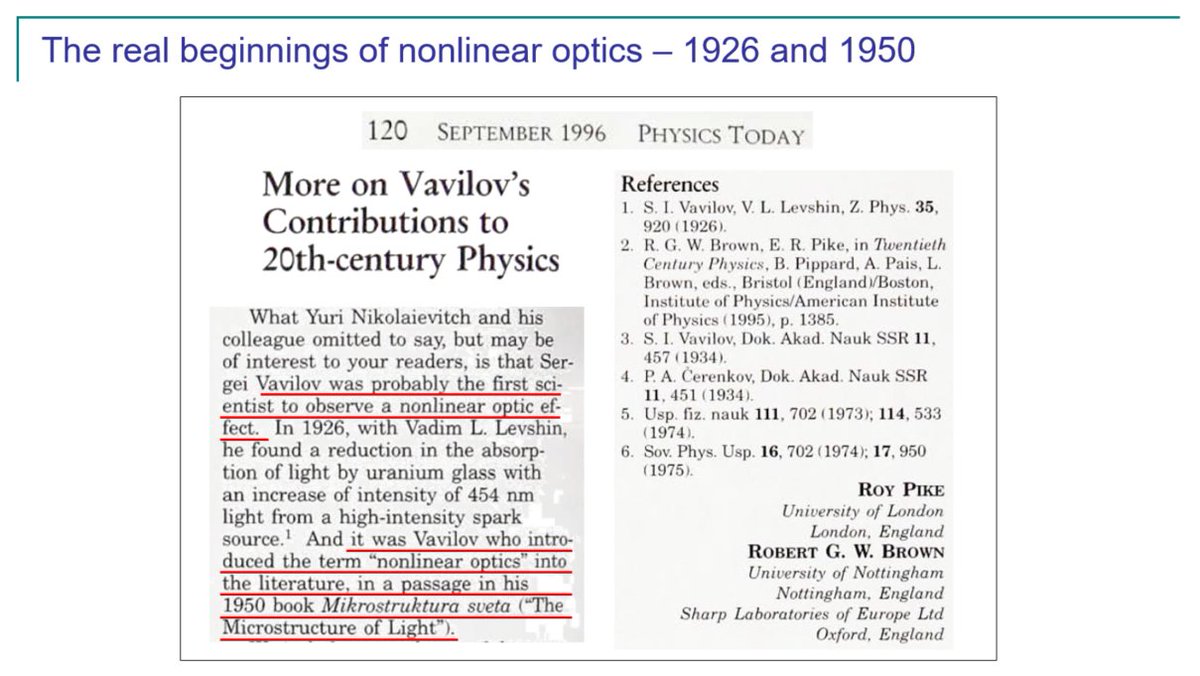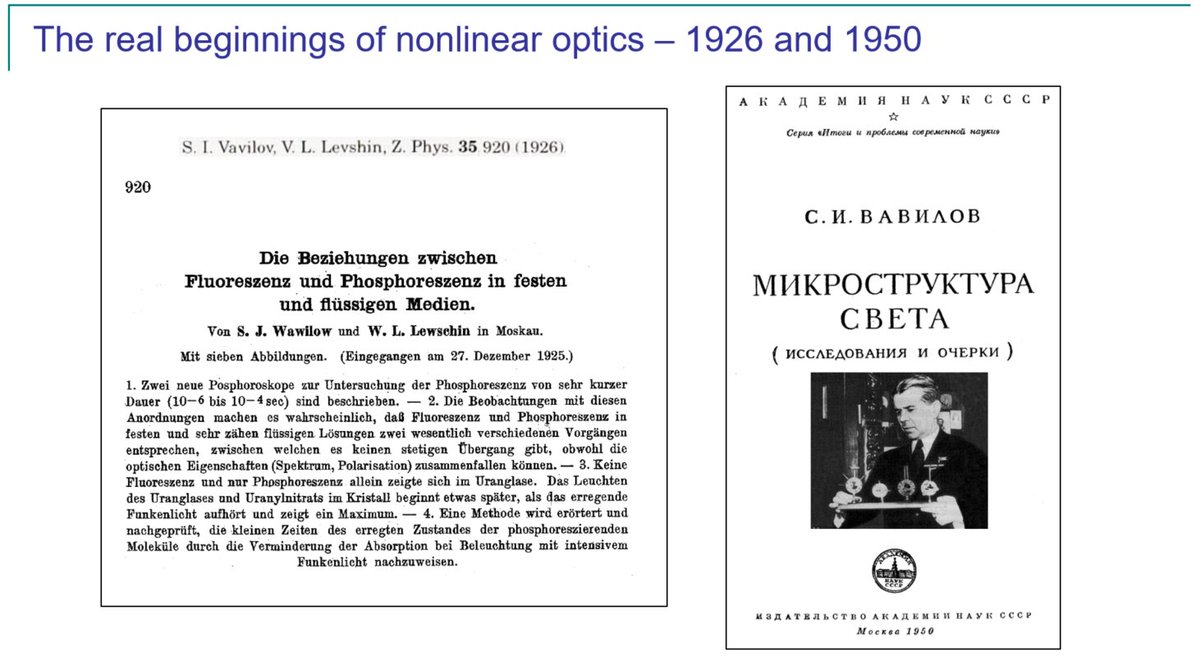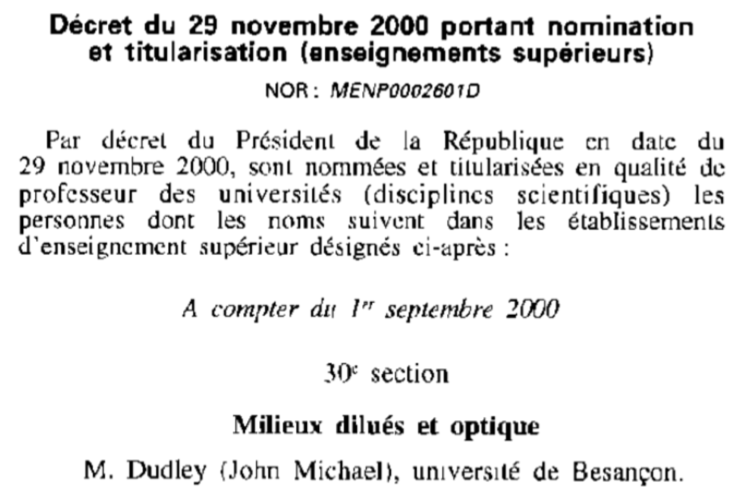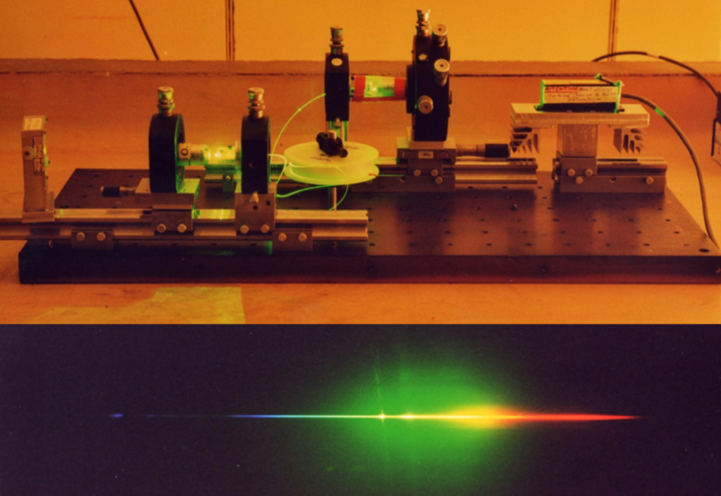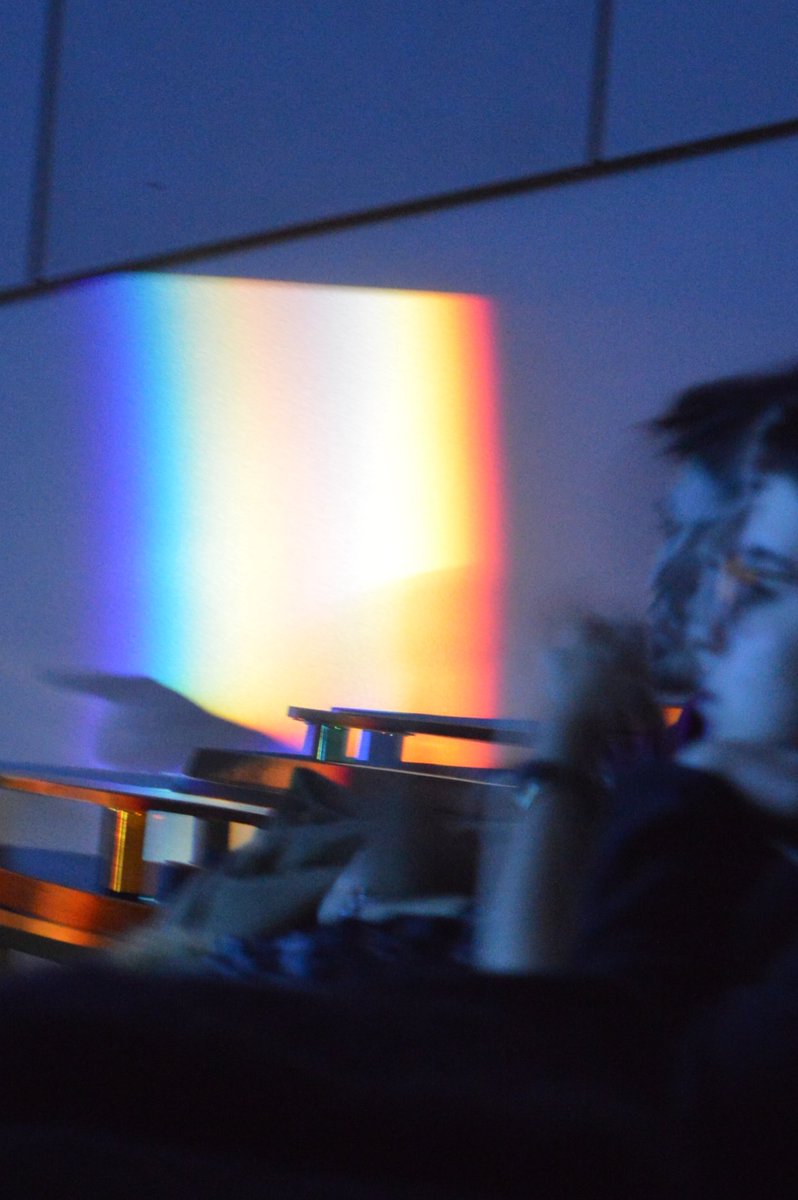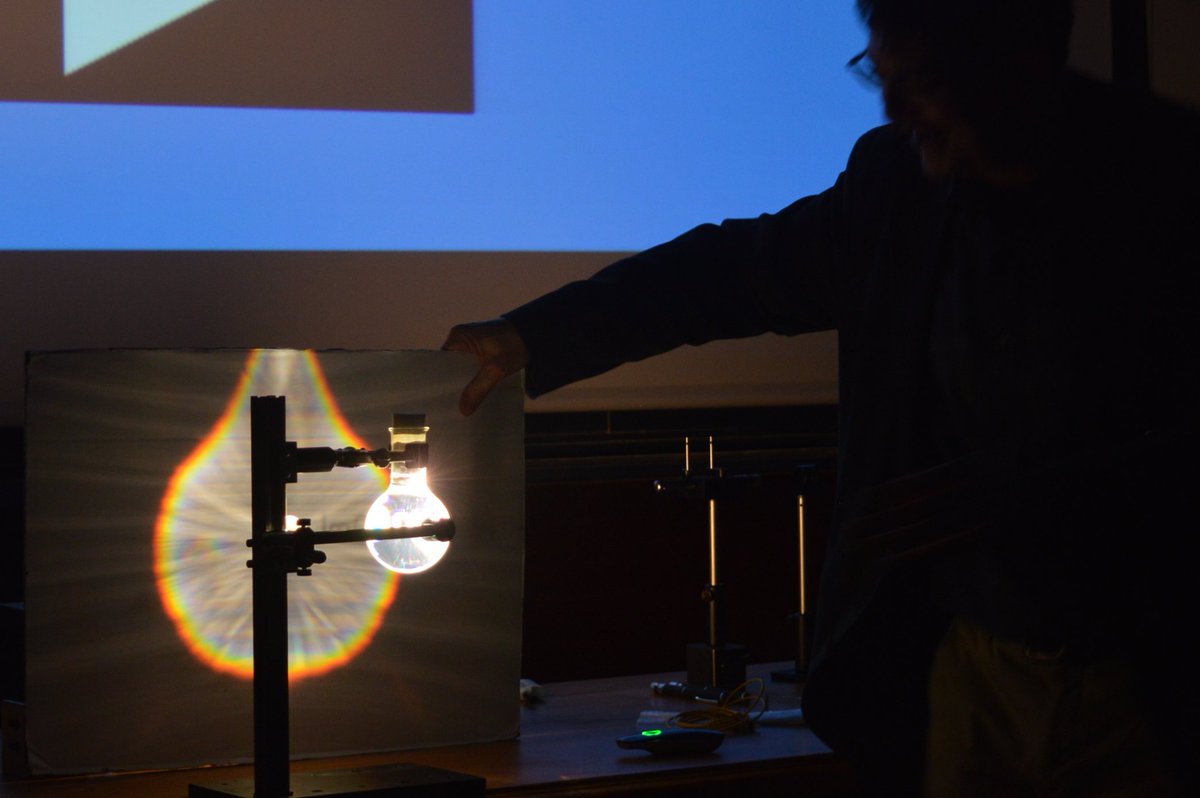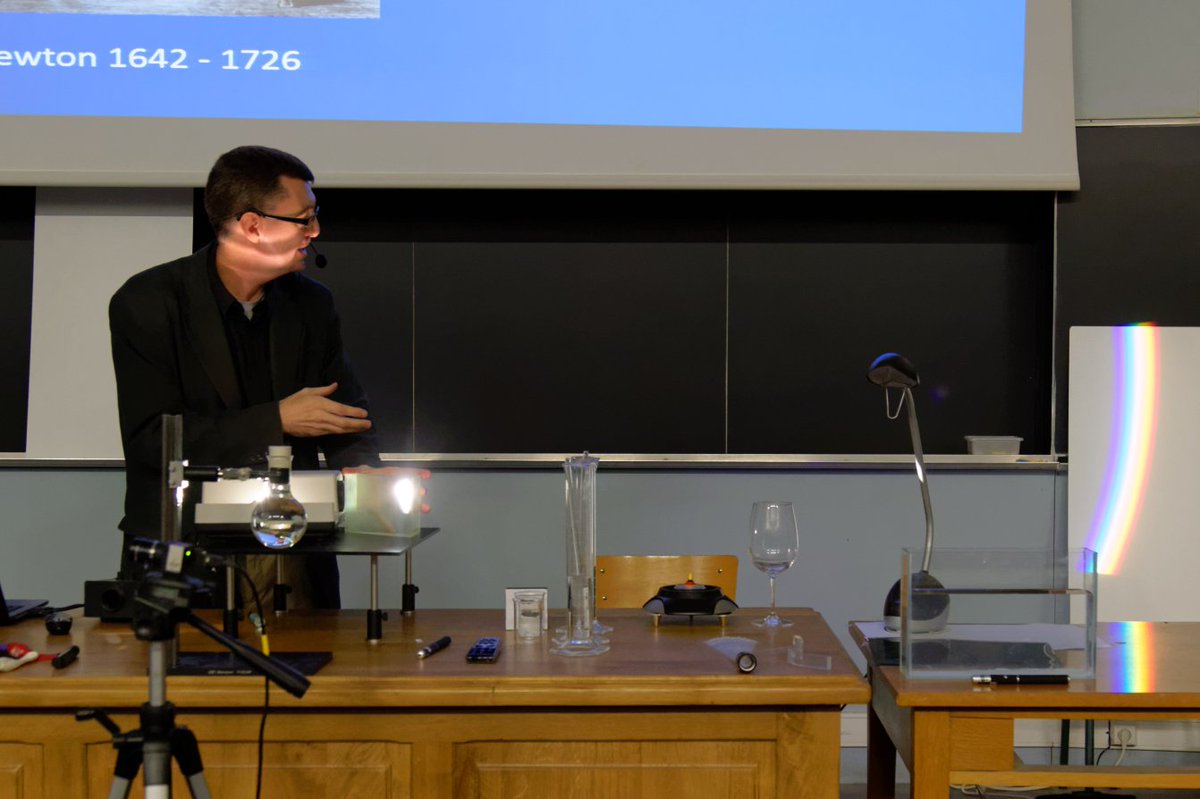
To kick off the week, here is an updated (and long!) thread on the history of nonlinear optics. First a real surprise! The explicit use of the terminology “nonlinear optics” can be traced back to Erwin Schrödinger in 1942. Yes you read that right. Schrödinger himself! 

Although this paper isn’t really what we would describe today as non-linear optics. Rather it describes “vacuum light-light scattering” or nonlinear QED. But the wording Schrödinger used definitely sounds familiar! It builds on earlier work by Born, Infeld, Euler. 

It seems that what Schrödinger and the others were describing was finally observed in 2019 at @CERN @ATLASexperiment Can @jonmbutterworth confirm ? 

Thanks to Dr George Nemes & Prof Svetlana Lukishova for highlighting this early work to the optics community! In fact George Nemes wrote to @OPNmagazine in 2010 after @jeffhecht wrote his great historical article for the 50th laser anniversary. optica-opn.org/home/articles/… 

(Aside: I just met George Nemes this month - so I thought! In an absolutely crazy coincidence, as a student in 1991, I had attended the @ictpnews Winter College on Ultrafast Phenomena at the same time as him and we are about 1 m apart in the group photo.) 

As a general question, how well-known are the early days of nonlinear optics? How far back does it go? For example, there are many effects considered part of nonlinear optics today that pre-date the laser. A non-exhaustive list could include some of these 19th century precursors. 

We could also include the Raman effect and Goeppert-Mayer's theory of Two Photon Absorption. Note that there was controversy about the award of the 1930 Nobel Prize only to Raman because Mandelstam & Landsberg had seen the same effect one week earlier in 1928! 

A decisive factor in the @NobelPrize award seems to be Raman's nomination by major physicists & former laureates from around the world. Mandelstam and Landsberg had support from a much more limited community! You can read more about this in the article by Singh & Reiss. 

Aside from these earlier studies, many sources trace the first experiments in nonlinear optics as we understand it today to 1941. Indeed, the seminal text by @BoydNLOLab cites the experiments of Gilbert Lewis in 1941. 

This book from 2019 gives a more detailed history, with Prof Lukishova pointing out not only the experiments of Gilbert Lewis (1941) but the much earlier work of Sergei Ivanovich Vavilov and V.L. Levshin (1926), including commentary and reprints of original papers. 

The experiment of Vavilov was described by Akhmanov during his 1985 review lecture on the history of nonlinear optics at Moscow State University for the XII ICONO Conference. Akhmanov’s figure was reproduced in a 2006 paper by Nikolay Zheludev @orctweets 

Sergey Ivanovich Vavilov (1891-1951) was a giant of physics. His 1926 contributions to nonlinear optics were actually pointed out in @physicstoday in 1996. 

Vavilov used the term "nonlinear optics" in his 1950 book (translated in German in 1954) & was co-discoverer of Cherenkov radiation (Vavilov-Cherenkov radiation in Russia). But he died before seeing maser/laser oscillation and before the 1958 Nobel Prize for Cherenkov radiation. 

Brown & Pike give the translation of how he introduced nonlinear optics in a chapter in the wonderful book Twentieth Century Physics (Eds Brown, Abraham Pais, A. B. Pippard 1995). But we know now that Schrödinger had used the term even earlier! 

By the way, after Vavilov’s book appeared in 1950, monographs on nonlinear optics appeared in 1964 by Akhmanov & Khokhlov, and 1965 by Bloembergen. These are the first dedicated volumes on the subject as far as I know. Please reply (add screenshots) if you know of others. 

George Nemes also wrote one of the first books on nonlinear optics in 1972. Although published in Romanian, it was included in the New Books section of @PhysicsToday in Feb 1973. Nice ad for photodetectors as well. 

Other early books on nonlinear optics include Butcher (1965), Baldwin (1969), and Zernike & Midwinter (1973). John Midwinter sadly passed away only very recently: 
https://twitter.com/bayvel_p/status/1460957428627951627?s=20

Self-focusing was of interest all around the world. Another early book was published in India in 1974. It was reviewed by Scottish soliton pioneer Willie Firth! @physicsscotland (There is in fact a separate thread on early books on nonlinear optics just waiting to be written!) 

A later 1984 book on nonlinear optics by Yuen-Ron Shen has become a classic. Its Introduction is legendary! Linearity beautifies, nonlinearity brings excitement and rejuvenation. Sounds about right to me! 

Going back in time again, a 1964 popular science article in Scientific American has become a remarkable work of major historical importance. Specifically, it describes the original second harmonic experiments of Franken et al. in some detail. 

Remember the story about the 1961 Franken @PhysRevLett paper? The spectroscopic signature of the ruby laser second harmonic was edited out as a speck of dust! However, the Giordmaine paper from 1964 saved these results and showed the original plates! 

So here we go! Remarkable! We finally see Franken’s evidence for second harmonic generation! And it’s easy to see why it was missed as a speck of dust. Maybe it’s just me but I absolutely love the fact that we can finally see this SHG spot which has been missing for so long! 

Giordmaine also wrote a great paper in @PhysicsToday in 1969 with fantastic colour pictures such as this early OPO. Clearly the adjustment knobs were cooler in those days! I think we still have one of those 1960s elevating jacks in our lab. 

A great overview of post-laser Western & USSR-era nonlinear optics was given by @jeffhecht in @OPNmagazine osapublishing.org/opn/abstract.c… The article includes the photo of the first "self-trapping" experiment that kicked off the study of spatial solitons. 

But Hercher’s photos of these laser damage tracks were not actually published at the time! His abstract in JOSAB Vol. 54, 563, 1964 was text only. The images only appeared in print 45 years later in the 2009 edited volume by @BoydNLOLab & Profs Lukishova & Shen. 

Chiao, Garmire and Townes published the theory of spatial solitons in October 1964, which included what many believe to be the first statement of the cubic NLSE in optics and the sech-soliton solution. This paper had only one reference (to Hercher)! 

But was it the first? In June 1965 Townes published a correction, acknowledging earlier work by Askarjan and Talanov. Reprints of these hard to find early papers are in the edited volume by @BoydNLOLab & Profs Lukishova & Shen. 

In December 1966, Akhmanov, Sukhorukov and Khokhlov published further independent theoretical studies studying the cubic NLSE, showing the extensive work carried out in the USSR. 

Experimental interest was evident and confirmation took place around the world. Self-focusing in liquids was reported by Pilipetskii & Rustamov (published 25 July 1965) and Hauchecorne & Mayer in France (published 15 November 1965). 

In the USA, the most well-known experiment was that from Bloembergen's group, published in December 1965. Bloembergen cited Askarjan and Talanov, but he was unaware of the earlier independent experiments in the Soviet Union and France. No email in those days remember! 

However we need to clarify some physics. Ideal NLSE spatial solitons are seen only under specific conditions & Hercher’s damage tracks were actually caused by more complex filamentation. But they still motivated the development of a whole new field! 

Major contributions to self-focusing and self-trapping were made by Kelley & Haus. An important point is that understanding filamentation requires a spatio-temporal dynamical model. This was first suggested by Lugovoi & Prokhorov and Marburger & Dawes. 

Haus’s paper may be one of those early papers (like the more celebrated FPU case) where a woman “computer” did the programming, but this wasn’t considered deserving of being recognized as a co-author. 

Back in the USSR, Akhmanov, Sukhorukov and Khokhlov published a long review paper in 1967 and established the Russian school of nonlinear and coherent optics. 

In 1967, Khokhlov & Akhmanov received the Lenin Prize, celebrated with a mural of them on a horse upon an SHG crystal. This photo was provided by Profs Makharov & Lukishova to @jeffhecht for his 2010 article. 

Much early Russian work foreshadowed current areas of research that we are exploiting on a daily basis e.g. mode-locking dynamics and the real-time dispersive Fourier transform (“spectron”) 

A memorial plaque to S.A. Akhmanov is now in the hall of the Nonlinear Optics Building of Moscow State University, made by the sculptor L.E. Kerbel and installed in 1994. 

To learn even more about the many Russian contributions to the early maser and laser era (especially the neglected work of Valentin Fabrikant), two great historical review papers are here! 

And some wonderful memories from Elsa Garmire of the early work with Charles Townes were published in 2015 in @NaturePhotonics 

Conclusions. The early days of laser and nonlinear optics were extremely international, & historical articles are important. Use these examples in teaching, and download @SPIEtweets Nobel prize poster for your lab! spiedigitallibrary.org/journals/advan… 

@threadreaderapp Unroll
• • •
Missing some Tweet in this thread? You can try to
force a refresh





